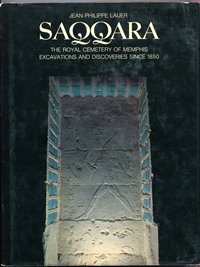| Main » Ad Board » ДРЕВЕН ЕГИПЕТ И АФРИКА » Архитектура |
| 07.06.2023, 06:23 | |
Некрополът на Сакара е не само един от най-старите, но и един от двата най-големи в Древен Египет. Той обслужва Мемфис, първата столица на обединената държава от времето на Старото царство чак до Късния период и гръко-римската епоха. Несравним с богато украсените си гробници и величествени пирамиди той е обект на непрекъснати изследвания и разкопки от средата на XIX век и до днес. Подробната, но и увлекателна монография на известния френски египтолог Жан-Филип Лауер (1902-2001 г.) разказва за работата на археолозите и постигнатите резултати до средата на 70-те години, включително и за собствените си проучвания в продължение на десетилетия. Той посвещава на царския некропол в Сакара почти целия си живот и основния фокус на своята археологическа кариера. Резултатът е настоящата книга, която разглежда подробно основните археологически забележителности в комплекса и историята на тяхното изучаване. АЛТЕРНАТИВЕН ЛИНК / ALTERNATIVE LINK: - на английски език, от Google Drive, формат PDF. Сваляне с ляв бутон (downloading by left button) от страницата на предоставящия сървър, после през бутона стрелка надолу/after by down arrow button.
| |
| Views: 1235 | Placed till: 07.07.2024 | Rating: 0.0/0 | |


